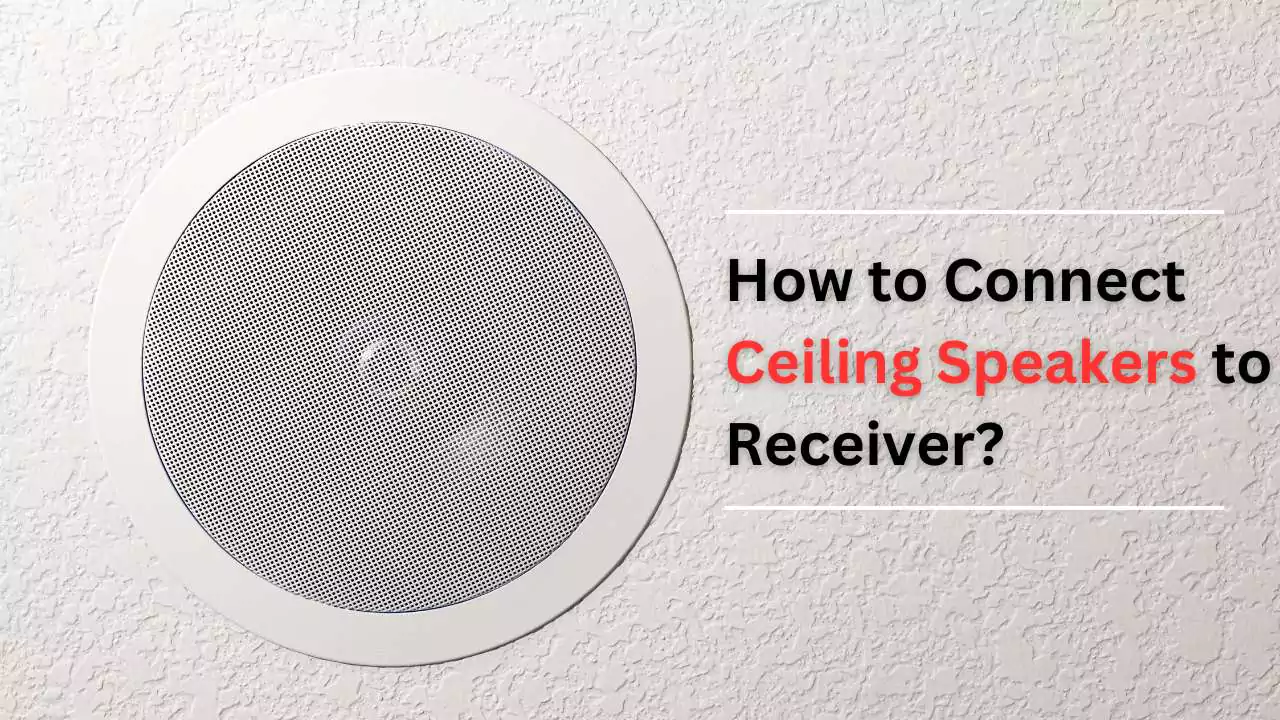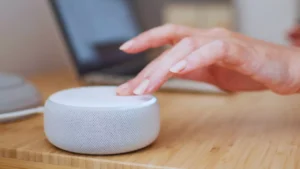To connect ceiling speakers to receivers, you have to decide the speaker’s location, install the ceiling speakers following the manufacturer’s instructions, connect the speaker wires, conceal them, and connect the speaker wire to the receiver. Finally, play your favorite audio to test the system.
Let’s get to a detailed step-by-step process to help you connect the ceiling speakers to receivers seamlessly.
In This Article:
Pre-installation planning
Based on the room’s layout and seating position, you need to choose the right location for your speaker. This would help you to achieve the best audio performance and also produce a balanced sound.
You need to consider the speaker configuration and surrounding sound setup. Also, note down the speaker-to-listener distance ceiling, speaker positioning, and listening preferences. If all these factors are sorted, then you can move on to the setup process for the best audio experience.
Check the receiver and speaker compatibility
You must ensure that the speaker and the receiver are compatible to produce an optimal audio performance. So, here are the factors that you need to re-evaluate before connecting the ceiling speaker to the receiver.
- Impedance compatibility, which you need to check for both the speaker and the receiver.
- The power rating of the speakers should not exceed the output power of the receiver.
- The power output should be compatible with the speaker’s sensitivity.
- The receiver should support the required number of speaker channels and configurations.
- The wires should be compatible, otherwise, you can also choose an appropriate adapter.
- Check the impedance and power handling and always take the specifications under consideration.
- Go through the manufacturer’s user manual to check whether the speakers and the receivers complement each other based on characteristics and sound features.
Tools & Materials Required
To set up the ceiling speaker and connect them to the receiver you need the following:
- Wire cutters
- Screwdrivers
- Fish tape or wire-pulling tool
- Speaker wire
- Banana plugs
- Wallplates
- Cable clips
- Mounting bracket
- Cable management solution
- Based on the type and model of the ceiling speaker you need to check the specific hardware requirements.
6 Step-by-step Process to Connect Ceilings speakers without receiver
Here are the steps that you need to follow to connect the ceiling speaker to the receiver.
Step 1: Prepare the location
You need to decide where you have to install the ceiling speakers. Consider factors such as room layout, existing wiring, room infrastructure, and speaker position, and then conclude a perfect location where you want to install the speaker. Always try to set them at equal distances of a minimum of 2 meters which is an ideal measurement for a standard room.
Step 2: Power down the electrical components
Before you start, for safety management, you must power down and unplug every component from the wall output. Also, unplug the receiver and this will help to prevent shocks and electric surges. You must also unplug the cables that are attached to the TV or amplifier from the receiver.
Step 3: Installation of the ceiling speaker
Following the manufacturer’s instructions try to mount the ceiling speaker and install the wiring carefully. Use the screwdriver to attach the brackets to the ceiling and tighten them, so that there is no chance of any accidents.
Step 4: Cut the speaker wires
Check the distance between the receiver and the speaker. Measure the distance and cut the speaker wires accordingly. Based on the length, always leave some extra wire to keep the flexibility. Now, conceal the speaker wire by rooting it through the wall, you can also consider the floor or the edges of the room. Using the cable clips, secure the wire in its place. You can also use cable management solutions based on the requirement and be careful to avoid electrical hazards.
Step 5: Connect the wires
Locate the speaker outputs which are usually at the back of the speaker. Look for the terminal labeled port on each speaker channel and connect the wire end to the respective ports. Ensure that you connect one end to the speaker and the other to the receiver. Verify whether the connection is secured and the wires have been plugged in finger-tight.
Step 6: Test the system
Try to play some audio through the receiver and ensure that the sound is coming out perfectly from all the speakers that you are connected to on the ceiling. You can adjust the balanced output of the sound and also the volume through the settings and achieve the desired audio experience.
Can you use ceiling speakers for a home theater setup?
Yes, you can use ceiling speakers in your home theater setup by connecting them to the rear surround sound.
What is the difference between in-wall speakers and in-ceiling speakers?
Usually, the features of in-wall speakers and in-ceiling speakers overlap, but their designs and the intent of use are very particular. Based on factors such as audio requirements, room layout, placement of the speaker, performance, etc, this speaker is designed differently.
How to power ceiling speakers?
Usually, ceiling speakers get power from the receiver, so they don’t need any external power source. The receivers have a built-in amplifier that helps these speakers to connect and power up. Otherwise, you can also get a stand-alone amplifier and connect it to the ceiling speaker for better sound quality.
How do you connect ceiling speakers to TV?
You can connect the ceiling speakers to the TV by simply connecting the receiver to the TV with its respective cable. You can use HDMI, RCA, or any standard connection cables. After a proper setup, you have to choose the TV audio output as a source and then test the speakers.
How many ceiling speakers are required to maintain consistency in sound quality?
You can choose to fit 4 to 6 speakers and place them in a square orientation. However, if the space is large enough, then only go for 4 speakers, otherwise, you can stick to a pair, which has left and right stereos, as they are sold.





